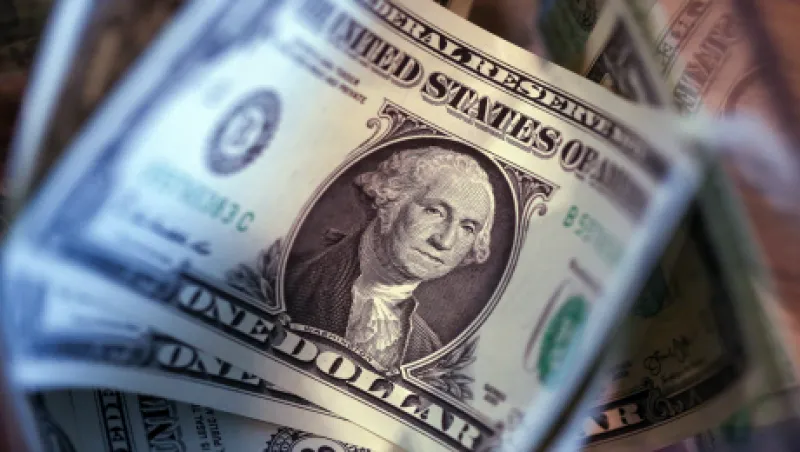A basic rule of thumb is that if you want to reduce risk, you should hedge. And if you want return beyond the yield and capital appreciation of your bonds, you may want to leave your currency exposure unhedged at times. For a dollar investor, of course, that would mean when the dollar is weakening.
Over the past two years, the dollar has shown volatility, with the U.S. dollar index soaring from July 2014 to March 2015, then bouncing up and down and declining so far this year. All that movement brings into relief the issue of hedging the currency exposure of an international or global bond portfolio.
“Currency tends to be the most important variable in international bonds,” says Robert Tipp, head of global bonds and foreign exchange for Prudential Investments in Newark, New Jersey. “The volatility of currencies is typically higher than the volatility of bonds.”
Indeed, currencies accounted for about half of the volatility of the Barclays global aggregate bond index from 2011 to 2015, according to data from Goldman Sachs Group. That index, unhedged, had an annualized volatility of 4.7 percent during that period, but the hedged version of that index had volatility of only 2.3 percent.
Over long periods of time, hedged portfolios and unhedged portfolios have similar performances, as the dollar’s moves largely balance out. But volatility is higher in unhedged portfolios. “Over time, the dollar is perhaps the largest mean-reverting asset in the world,” says Douglas Peebles, chief investment officer and head of fixed income at AllianceBernstein in New York. “You get a lot of volatility but no extra return by investing in foreign exchange.” He points out that the dollar index, at its current level of 95.11, is not far off from its 97.1 average since the index’s 1973 inception.
Fund managers may easily be able to stomach the volatility of an unhedged currency exposure. Their customers, maybe not so much. “Over the long term for multicurrency funds, hedging would have little effect on returns, but it can have a lot of influence on clients’ experience,” says Simon Arrata, CEO of Harvest USA, the U.S. division of $101 billion Beijing-based asset management firm Harvest. “Having currencies bounce around worries them.” Hedging might thus be necessary to placate customers.
Fund managers say they view currencies as assets in their portfolios that are distinct from the bonds. “We look at the credit component, the interest rate component and the currency component separately,” Tipp says. If the currency risk gets hedged away using forwards, which reflect interest rate differentials, what’s left is the slope of the yield curve for your income, he continues.
Options offer another way to hedge currency exposure. When spot currency prices move away from forward prices, however, options can be more difficult to use than forwards. This aspect arises because the options position then needs to be adjusted in what is known as delta hedging, points out Michael Goosay, senior portfolio manager at Goldman Sachs Asset Management in New York.
Currency movements also give fund managers a chance to deploy what’s called dynamic hedging: increasing or decreasing their hedges to match short-term currency moves. Opportunity abounds there, of course, as currencies frequently fluctuate. “If you can capture a big trend, you can make a lot of money,” AB’s Peebles says. But this isn’t an easy game.
Arrata and his Harvest colleagues have had success with intermittent hedging in Harvest Funds Intermediate Bond, the firm’s Chinese bond mutual fund. Their hedging of the fund’s yuan exposure helped prevent losses for the fund when China’s government devalued the currency last year, and their lack of hedging over the past three months enabled the fund to benefit from the yuan’s strength. “Our hedging is designed for risk mitigation first, and might be additive to returns second,” he says. “We don’t always need to use it.”
So what should U.S. bond fund managers do about their currency exposure now? The dollar may well be headed lower, money managers say. “This period is the first time in many years the Fed has focused on the dollar,” says Rick Rieder, chief investment officer of global fixed income at BlackRock in New York. “That’s why we think exposure out of the dollar is important.”
BlackRock recently bought Mexican bonds in its Strategic Global Bond Fund. “We think Mexico’s currency and debt are attractive, so we would leave 25 to 50 percent of the exposure unhedged,” Rieder says. Mexico’s ten-year government bond yields 5.9 percent, compared with 1.89 percent for ten-year U.S. Treasuries.
So at least for the time being, “an unhedged portfolio may outperform a hedged one,” Prudential’s Tipp says.
Get more on foreign exchange.







